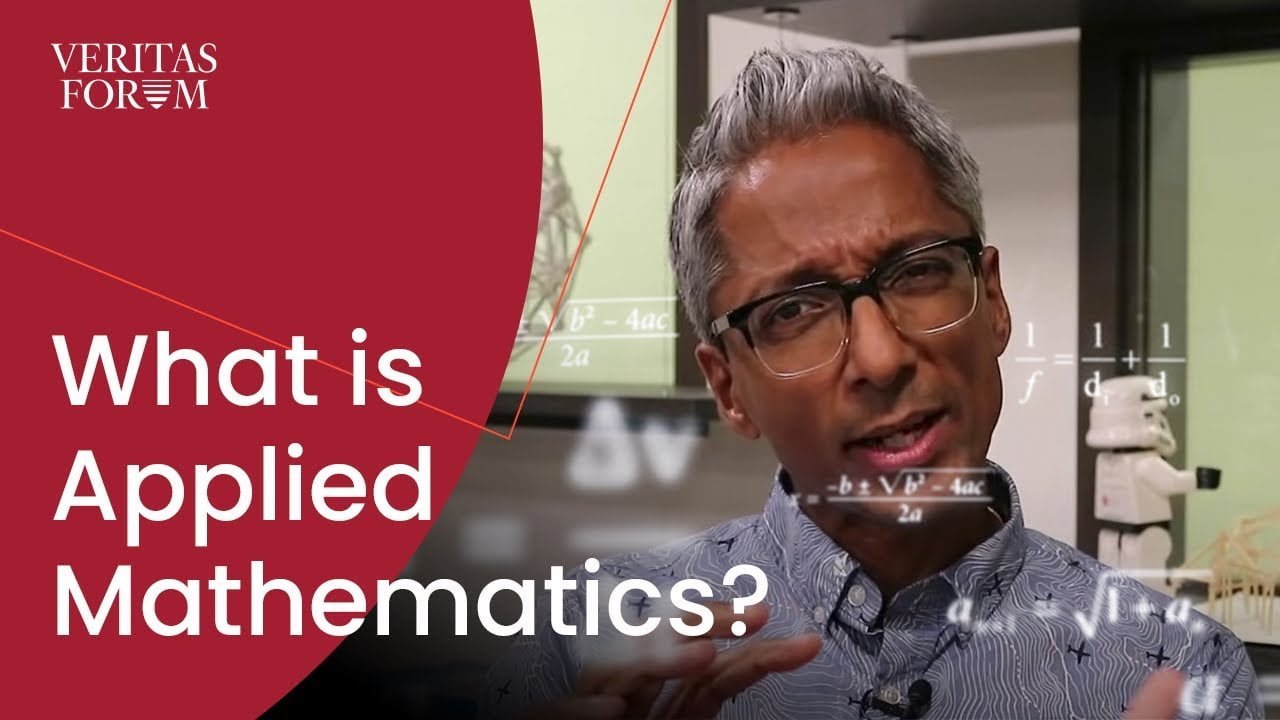You’ve probably heard the term “applied mathematics” thrown around before, but what does it actually mean? As someone fascinated by both math and its real-world applications, I used to wonder about this too. It turns out applied mathematics is all about using mathematical methods to solve problems that pop up in science, engineering, and even social sciences. Unlike pure math which focuses on theorems and proofs, applied math is driven by practical use cases. The goal is to both explain real phenomena using math and predict unseen events. To do this, applied mathematicians harness different branches of math like analysis, differential equations, and statistics. They work hand-in-hand with scientists and engineers, translating experimental results into mathematical insights. So in short, applied math brings the abstract power of mathematics to bear on the tangible problems we face in fields like physics, biology, and more. It’s math with its sleeves rolled up, ready to tackle the messy issues of the real world.
What Is Applied Mathematics?
Applied mathematics is the branch of mathematics concerned with mathematical methods used in science, engineering, and business.
It focuses on finding solutions for real-world problems. Knowledge of concepts like analysis, differential equations, and probability theory are required to solve issues in fields like physics, engineering, and finance.
Solving Practical Problems
The goal of applied mathematics is to solve practical problems that arise in various fields. For example, applied mathematicians may analyze the flow of air over an aircraft wing, the transmission of nerve impulses in the brain, or the fluctuation of stock prices. They develop mathematical models to understand complex systems and predict how they will behave.
Interdisciplinary Collaboration
Applied mathematicians often work with researchers and professionals in other disciplines. They help develop mathematical tools and techniques to solve important problems. For instance, mathematicians work with physicists and engineers on problems like modeling the behavior of fluids, developing new materials, or improving telecommunications systems. They work with economists and social scientists on problems such as modeling market behavior or understanding how diseases spread through populations.
A Growing and Evolving Field
Applied mathematics is a broad and ever-changing field. As technology and computing power advance, applied mathematicians are able to tackle increasingly complex problems. They develop innovative mathematical techniques for modeling natural and social phenomena. As issues like climate change, sustainable energy, and global health become more pressing, the work of applied mathematicians is crucial for developing solutions and shaping policy. Applied mathematics is a highly interdisciplinary and collaborative field that continues to grow in importance.
Real-World Applications of Applied Math
Applied mathematics is crucial for solving many real-world problems and understanding natural phenomena. ###Materials processing Applied math is used extensively in materials processing to model how materials change under different conditions. Mathematical modeling helps determine optimal processing conditions and predict material properties. For example, applied math is used to model heat transfer and fluid flow during materials processing like metal casting, welding, and glass production.
Medical diagnosis
Applied mathematics, especially statistics, plays an important role in medical diagnosis and healthcare. Doctors use statistical models to determine the likelihood of a disease based on symptoms and test results. Mathematical models also help optimize treatment plans and predict how patients may respond. For example, applied math is used to analyze medical images, model the spread of diseases, and gain insights from large datasets.
Weather prediction
Sophisticated mathematical models and simulations make weather prediction possible. Meteorologists use differential equations, statistics, and numerical methods to model the complex atmospheric processes that drive weather events. Although not perfect, these models provide forecasts that help us prepare for severe weather like hurricanes, floods, and heatwaves. Improvements in computing power and applied mathematics will continue enhancing weather prediction.
In summary, applied mathematics is essential for gaining insights into and solving many real-world problems. While the math may be complex, the goal is using it to better understand and improve the world around us. Applied math truly is everywhere in our lives, even if we don’t always realize it!
Key Areas of Applied Mathematics
Optimization
Optimization is a key part of applied math that focuses on finding the best solution to a problem within a given set of constraints. Things like maximizing profit while minimizing cost or finding the shortest path between two points are examples of optimization problems. Optimization methods like linear programming, nonlinear programming, and heuristic algorithms are commonly used to solve real-world optimization problems.
Probability and Statistics
Probability and statistics are used to analyze data and make predictions. Things like determining the likelihood of events, estimating population means, and detecting patterns in data fall under this area. Statistical methods such as hypothesis testing, regression analysis, and Bayesian analysis are important tools for applied mathematicians. Understanding probability and statistics is crucial for fields like data science, economics, and finance.
Dynamical Systems
Dynamical systems theory aims to understand how systems change over time. It focuses on systems that are constantly changing, like the spread of diseases, stock market fluctuations, or the movement of satellites. Dynamical systems methods are used to analyze, understand, and even control these systems. Concepts such as chaos theory, bifurcation theory, and stability analysis are central to this area of applied mathematics.
Calculus of Variations
The calculus of variations seeks to find optimal solutions to problems by maximizing or minimizing a quantity. Unlike regular calculus which deals with functions of variables, the calculus of variations works with functionals, which take functions as inputs. It is a powerful tool used in fields like physics, engineering, and economics to solve complex optimization problems. Concepts such as the Euler-Lagrange equation and Hamilton’s principle are fundamental to the calculus of variations.
Understanding and applying methods from areas like optimization, probability, dynamical systems, and the calculus of variations allows applied mathematicians to solve important problems in science, engineering, and beyond. Applied mathematics provides a bridge between pure mathematics and the real world.
Careers for Applied Mathematicians
As an applied mathematician, you have a wealth of career options available to you. Many companies are realizing the value of applied mathematics for improving decision making, optimizing processes, and gaining useful insights from data.
Data Analyst
Data analysts take an analytical, numbers-driven approach to solving problems. They use statistics, predictive modeling, and data mining to uncover insights and trends. Nearly every industry needs data analysts to help make better choices by analyzing performance metrics, sales data, web traffic, and more.
Actuary
Actuaries use math and statistics to analyze the financial costs of risk and uncertainty. They help insurance companies develop policies, set premium rates, and design investment plans. Actuaries need a strong background in mathematics, statistics, and finance.
Operations Research Analyst
Operations research analysts use advanced mathematical techniques to help organizations solve problems and make better decisions. They analyze data to determine optimal solutions for maximizing profits, productivity, and efficiency. Many work for management, scientific, and technical consulting firms.
Financial Analyst
Financial analysts provide guidance to businesses and individuals making investment decisions. They assess the performance and risks of stocks, bonds, and other investments. Strong skills in mathematics, statistics, and finance are essential. Most financial analysts have at least a bachelor’s degree in finance, accounting, business administration, or a related field.
The job opportunities for applied mathematicians are numerous and often well-paying. And the work is challenging and rewarding, allowing you to use your mathematical skills to solve real-world problems. Whether you’re analyzing risks for an insurance company or optimizing supply chain logistics for a major retailer, a career as an applied mathematician lets you apply your talents in a practical way.
FAQs About Applied Mathematics
What does an applied mathematician do?
What kind of math is used?
What are some examples of applied math problems?
Modeling the spread of diseases to determine how to contain epidemics.
Optimizing traffic flow in cities to reduce congestion.
Analyzing financial data to detect fraud or predict market trends.
Developing algorithms for facial recognition systems.
Modeling weather patterns to improve forecasting accuracy.
Optimizing manufacturing processes to improve efficiency and reduce waste.
What degree or background is required?
In summary, applied mathematicians use mathematics to solve important problems in the real world. They build models, run simulations, analyze data, and develop algorithms and solutions to explain what’s observed and predict what’s next. An applied mathematician has a rewarding career working with researchers and engineers in various fields to solve complex, interdisciplinary problems.
Conclusion
You see, applied mathematics is all about using mathematical methods to solve real-world problems. Whether it’s predicting the weather, designing better technology, or understanding biological systems, math gives us the tools to gain insights and make discoveries. Sure, pure math has its place too in advancing knowledge, but applied math is where the rubber meets the road. It takes theoretical concepts and puts them into practice in ways that directly impact people’s lives.
So if you’re curious about how things work and want to solve important problems, applied math might be for you. The challenges are many, but the potential rewards – advancing science, inventing new products, saving lives – make it a career path worth pursuing. Just remember that it takes patience, creativity, and a passion for math. Approach problems with an open and persistent mindset. The solutions are out there waiting to be uncovered. Now go out and make your mark on the world!









Discussion about this post